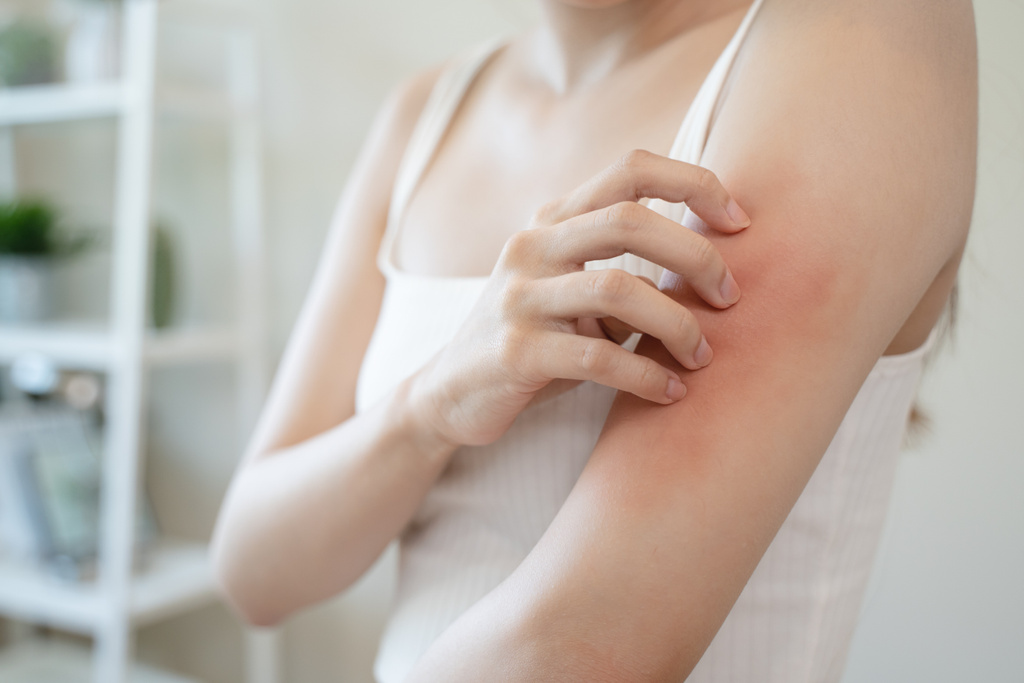What is Dermatomyositis?
Dermatomyositis is an autoimmune condition where the body's immune system mistakenly attacks its own tissues. It primarily affects the skin and muscles, leading to inflammation, muscle weakness, and skin rashes. The exact cause of dermatomyositis is unknown, but it is believed to involve a combination of genetic and environmental factors. The disease can occur at any age, but it is most common in adults aged 40-60 and children aged 5-15.
Symptoms and Diagnosis
The hallmark symptoms of dermatomyositis include a distinctive reddish-purple rash on the face, eyelids, knuckles, elbows, knees, chest, and back. Muscle weakness, particularly in the hips, thighs, shoulders, and neck, is another primary symptom. Diagnosis typically involves a combination of physical examination, blood tests for muscle enzymes, electromyography, MRI, and sometimes a muscle or skin biopsy.
Why Does Dermatomyositis Occur?
The exact cause of dermatomyositis remains unclear, but several factors may contribute to its development:
-
Genetic Predisposition: Certain genetic markers may increase susceptibility to autoimmune diseases, including dermatomyositis.
-
Environmental Triggers: Infections, medications, or exposure to ultraviolet light may trigger the onset in genetically predisposed individuals.
-
Immune System Dysfunction: An abnormal immune response leads to inflammation and damage to muscle and skin tissues.
Treatment Options for Dermatomyositis
Medications
The primary goal of treatment is to reduce inflammation and suppress the immune system. Common medications include:
-
Corticosteroids: Prednisone is often the first line of treatment to quickly reduce inflammation.
-
Immunosuppressants: Methotrexate or azathioprine may be used to decrease the immune system's activity.
-
Biologic Agents: Rituximab and other biologics may be considered for severe cases.
Dermatomyositis Treatment Costs
The cost of treating dermatomyositis can vary widely depending on the severity of the disease, the specific treatments used, and the healthcare system in place. Below is a general estimate of potential costs:
|
Treatment Type
|
Estimated Cost (USD) per Year
|
|
Corticosteroids
|
$500 -$1,500
|
|
Immunosuppressants
|
$1,000 -$5,000
|
|
Biologic Agents
|
$20,000 -$40,000
|
|
Physical Therapy
|
$1,000 -$3,000
|
|
Dermatological Care
|
$500 -$2,000
|
Source: Mayo Clinic, American College of Rheumatology
Lifestyle Adjustments for Managing Dermatomyositis
Anti-inflammatory Diet Recommendations
Diet plays a crucial role in managing inflammation. An anti-inflammatory diet can help alleviate symptoms:
-
Foods to Include: Fatty fish (salmon, mackerel), leafy greens, nuts, olive oil, and berries.
-
Foods to Avoid: Processed foods, refined sugars, red meat, and trans fats.
-
Benefits: Reduces inflammation, supports immune function, and promotes overall health.
Physical Therapy and Exercise
Regular physical activity is essential for maintaining muscle strength and flexibility:
-
Recommended Exercises: Low-impact activities such as swimming, walking, and yoga.
-
Benefits: Improves muscle strength, reduces stiffness, and enhances overall well-being.
Stress Management Techniques
Managing stress is vital for individuals with autoimmune conditions:
-
Techniques: Mindfulness meditation, deep breathing exercises, and progressive muscle relaxation.
-
Benefits: Reduces stress-related inflammation, improves mental health, and enhances quality of life.
Topical Treatments for Skin Rashes
Skin rashes associated with dermatomyositis can be managed with topical treatments:
-
Remedies: Corticosteroid creams, calcineurin inhibitors, and moisturizers.
-
Benefits: Reduces rash severity, alleviates itching, and improves skin appearance.
TIP: Understanding the Importance of Comprehensive Care
It's crucial to approach dermatomyositis with a comprehensive care plan that includes medical treatment, lifestyle adjustments, and regular monitoring by healthcare professionals. Always consult with a healthcare provider before making any changes to your treatment plan.
FAQs
Q: Can dermatomyositis be cured?
A: There is currently no cure for dermatomyositis, but treatments can help manage symptoms and improve quality of life.
Q: Is dermatomyositis hereditary?
A: While there is a genetic component, dermatomyositis is not directly inherited. It involves a combination of genetic and environmental factors.
Q: How long does it take to see improvement with treatment?
A: Improvement can vary; some patients may see changes within weeks, while others may take months.
Q: Are there any alternative therapies for dermatomyositis?
A: Some patients explore acupuncture, massage, or dietary supplements, but these should be discussed with a healthcare provider.
Q: Can children outgrow dermatomyositis?
A: Some children may experience remission, but ongoing monitoring and treatment are essential.
References

